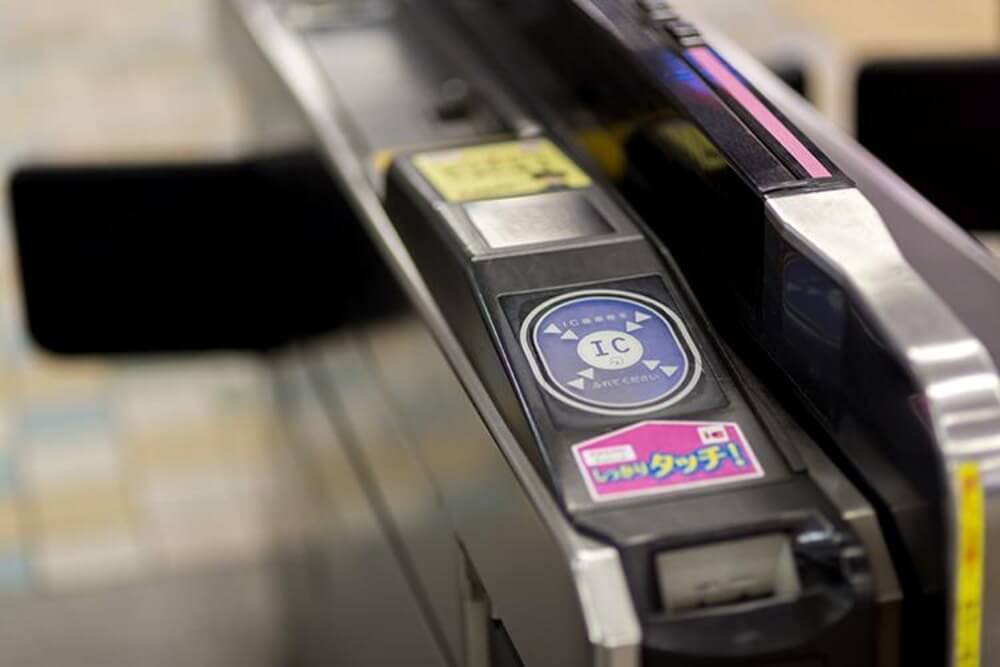IC cards are more than just a smart card that you can use for getting on public transportation. You can also use them at convenience stores, grocery stores, gift shops and so on. They can be used for different kinds of transportation including buses, subways and trains which makes transfering between different means of transportation much easier. The different types of IC cards are available in regions and railway companies across Japan but you can use any IC cards especially if you travel in the city.
Here is a helpful guide for beginners on how to buy and use IC cards, and an introduction to different kinds of IC cards in Japan!
Where can you get an IC card?
IC cards can be purchased at train stations, bus information centers, or JR ticket offices around Japan especially in big cities like Tokyo and Osaka. Depending where you are, the available IC cards differ, so it’s better to check in advance what types of IC cards are available in the area. For example, If you travel around Tokyo, you can buy a Suica card at JR East Railway which is one of the primary transport networks around the area. Or at the subway stations, you can buy a Pasmo card instead. There arent any big difference whichever you choose since both can be used for any public transportation running through Tokyo.
You can easily buy IC cards at ticket machines or ticket offices.

You can also use IC cards on your phone
It’s also popular to use IC cards on your smartphone, using the app that connects your Apple Wallet which allows you to use IC cards without actually having them on you. You can set the setting as automatically charging your designated amount on your mobile IC card so you’ll never have to worry about how much is left on your IC card before getting through the ticket gate.
How to use IC cards in Japan
Basically, you just need to tap your IC card at the ticket gates. The correct fare is automatically calculated and deducted from your card. You can also check the balance which is shown on the screen. Don’t forget to add money to your IC card regularly so that you can have enough on the card to travel. You can do this at Ticket Machines at major stations. When adding money, please be aware that they only accept Japanese cash, meaning you cannot pay with credit cards or any other foreign currency.

You can also use IC cards for paying at convenience stores, vending machines at stations and other shops. It’s very useful to have one card for everything you need to pay for while traveling.
Another unique way to use IC cards is to pay for bicycle sharing. Docomo Bicycle Sharing is a popular and useful bike hire service which has expanded throughout Japan(mostly in big cities), and they accept payment by IC card.
Most Popular & Useful IC Cards in Japan
1. Suica (JR EAST Railway)
Suica is a popular IC card issued by JR EAST Railway, which boasts the largest train network system in Tokyo and the surrounding areas. You can get a Suica card from Multifunction Ticket Vending Machines installed at major JR EAST stations, or JR Ticket Offices known as “Midori-no-madoguchi”. Sale Prices range from ¥1,000, ¥2,000, ¥3,000, ¥4,000, ¥5,000 up to ¥10,000. When you get your Suica card you’ll pay a deposit of ¥500 which is automatically included in the amount of money you decide to put on your card.
PASMO is another popular IC card issued by other public transport including private bus operators, railways and subways around Tokyo. You can also be use it on JR trains and other public transport. PASMO is compatible with Suica.
2. ICOCA(JR WEST Railway)
If you are planning on visiting the Kansai region including Osaka and Kyoto, ICOCA is something that you should get before starting your journey. It is a primary IC card widely used and accepted in the Kansai region. It can be purchased from Multifunction Ticket Vending Machines installed at major JR WEST stations, or you can go to JR Ticket Offices (Midori-no-madoguchi). You’ll pay a refundable deposit of ¥500 (just like Suica in Tokyo) which is automatically included in the first payment of ¥2,000.
3. manaca (Nagoya Railroad)
manaca is an IC card mainly used in the Chubu region of Japan, including Nagoya. With this IC card you can travel from Chubu Centrair International Airport to the central part of Nagoya, south Gifu and west Shizuoka by taking Meitetsu trains and buses, Nagoya Municipal Subway Lines, the Aonami Line, Toyohashi Railway Lines and many more. This card is sold at manaca ticket vending machines installed at Nagoya subway stations or subway ticket offices. Sales prices range from ¥1,000, ¥2,000, ¥3,000, ¥5,000 to ¥10,000, including the refundable deposit of ¥500.
4. SUGOCA (JR Kyushu)
SUGOCA allows you to get around the Kyushu area easily with JR Kyushu Railway Lines. It mainly covers the Fukuoka & Kita-Kyushu area, including the popular tourist destinations such as Hakata, Kokura, Kumamoto and Beppu. If you want to take the shinkansen to save time, you will need to purchase shinkansen tickets separately. SUGOCA is compatible with other IC cards. You can also use it as e-money to pay at shops or convenient stores that accept them.
SUGOCA offers an easy transport and payment method for travelers who want to get around the Kyushu area conveniently. It is issued by JR Kyushu, which provides an expansive transport network across the area. The basic concept is quite similar to other IC cards, especially manaca which both have non-registered and registered cards. Non-registered ones can be purchased from Multifunction Ticket Vending Machines installed at major JR Kyushu stations, or JR Ticket Offices (Midori-no-madoguchi). If you want a registered one, you will have to visit a JR Ticket Office as they are not sold at Ticket Vending Machines. The price is ¥2,000 which includes a refundable deposit of ¥500.
Japan Wonder Travel Tours
If you need some help organizing your trip to Japan, you should definitely check out our tours with knowledgeable English speaking guides. Let us help you discover amazing spots that are normally hidden from tourists and learn more about whatever area you are planning on visiting.
- Tokyo 1-Day Highlights Private Walking Tour (8 hours)
Your guide will meet you at your hotel, and you will all head out and see the highlights of Tokyo! This tour is flexible and the destination is customizable according to your requests. - Tokyo Fish Market Tour at Tsukiji – Enjoy Local Food and Drink
Tsukiji Fish Market is the center of the culinary culture in Tokyo. Visit the bustling market and try the local favorite foods and drinks on the street. Of course this includes fresh seafood and sushi! - Kyoto Private Full Day Walking Tour
Visit the highlights of Kyoto which includes Fushimi Inari Shrine, Kinkakuji (Golden Pavilion Temple) and Arashiyama. This tour also can be customized upon your request.

If you think you will largely rely on public transport during your time in Japan, it is a great idea to get an IC card to make your travel easy and convenient. It will also help you enjoy great shopping experiences with a little cash to carry around in your wallet. Compare the popular IC cards above carefully and choose the best one for you to get!
Follow us on Instagram, Facebook and Twitter for more travel inspiration. Or tag us to get featured!
Happy traveling!
Other articles you might enjoy

Miho Shimizu is a Japanese freelance writer settled in Shizuoka with her husband and two rabbits. Fascinated with travelling at the age of 18, she has spent most of her long holidays exploring incredible spots around Japan. Also love to listen to music, draw, and read novels over a cup of green tea.
This post may contain some affiliate links. When you click through and make a purchase we may receive some commission, at no extra costs to you.





